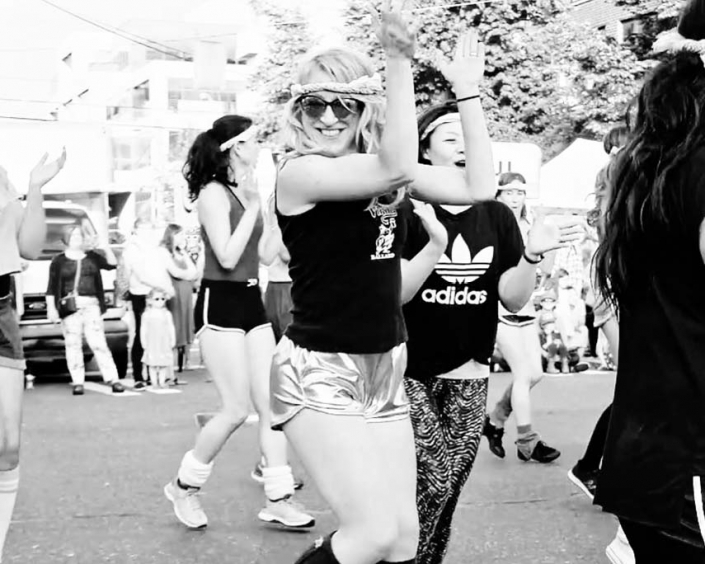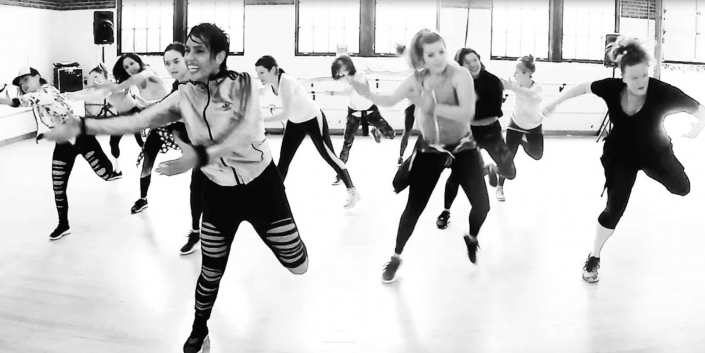FAQS
Can Adults Take Dance?
Definitely! If there are any concerns for your health or safety, you should check with your Dr. before beginning a dance program.
With that said, we’ve been teaching adults for 11 years now, and have seen every level of experience and confidence learn new dances. The more you take, the easier it becomes! You’ll start to build your skill set and gain confidence to learn more, and get more out of your dance experiences!
What is Fitness Dancing?
Fitness Dancing or Dance Fitness is currently thought of as getting a workout through dance choreography. The structure of the classes have changed through the decades, and now anything goes! Read on to see if you recognize any of the formats we’ve listed!
Dance Fitness Classes through the decades:
Dance Aerobics, Hi-Lo Aerobics, Jazzercise were all 70’s & 80’s
based aerobics trends based on simple, repetitive movements, blending jazz basics and simple fitness exercises into a 50-60 minute combination. These were primarily set to higher bpm count canned music. Think mambo mixed with high kicks, lunges, tricep pushbacks and plie/squats!
Hip Hop Classes
came through and dominated the scene for a bit in the 90’s and early 2000’s, with classes offering a more street style choreography using chart topping music with varying skill levels of choreography.
Zumba Fitness
came through and revolutionized Dance Fitness as we know it in the early 2000’s and grew to become an international mega force, still holding ground to this day.
Though on the decline in it’s arc of popularity, it paved the way for many of the off-shoot dance fitness classes you see today.
While Zumba Fitness created the blueprint of dance fitness as we commonly see it today.of simple, repeatable patterns choreography set to a song, and in an hour’s time, 15-17 different songs within that hour. With the movement and movements kept simple, and high in repetition, the participant can easily absorb and master the movement, getting an instant workout. The signature sound and movement of Zumba is Latin-based movement set to 4 Latin genres of dance, Cumbia, Salsa, Reggeaton and Merengue, and reproductions of popular Latin Songs.
As you can imagine, people began spinning off of this idea, and adding their own cultural influences and tastes in music to create their own signature formats.
Today you’ll see dance fitness programs that are based in Hip hop, Bollywood, BellyDance, Twerk Fitness, Dancehall Dance Fitness, Salsa, Reggaeton, Line Dance….well, you get the picture!
In the end, it’s looking like just taking any dance class can qualify it to be a dance fitness class. But more serious dance classes might shy away from using the term, as it isn’t quite as technical and artful as a traditional dance class is.
Is Learning Dance Easy?
That will always depend on many factors. Your aptitude, your attitude, the amount of time you dedicate to learning and practicing, your instructor/s, and the type of dancing you’re learning. The bottom line here is, if you want to learn to dance, you must put in the time to pick up the skills, as it is like learning a new language, but with your body! You’d never expect to learn a new language in just a few weeks, so don’t expect it of learning to dance ; )
How Do I Start My First DancePowered Class?
Check Our Schedule Page.
There you’ll find times, payment options and directions, registration form and waivers for your first class!
We are also offering our West Seattle classes on Zoom, so if you’re still quarantining, or just being super careful and staying at home during this time, you can still join in!
Don’t forget to read these sources ; )
Dancing and the Brain | Harvard Medical School
The Power of Dance for Brain Health | Informa Dance School
Dancing Can Reverse the Signs of Aging in the Brain




























